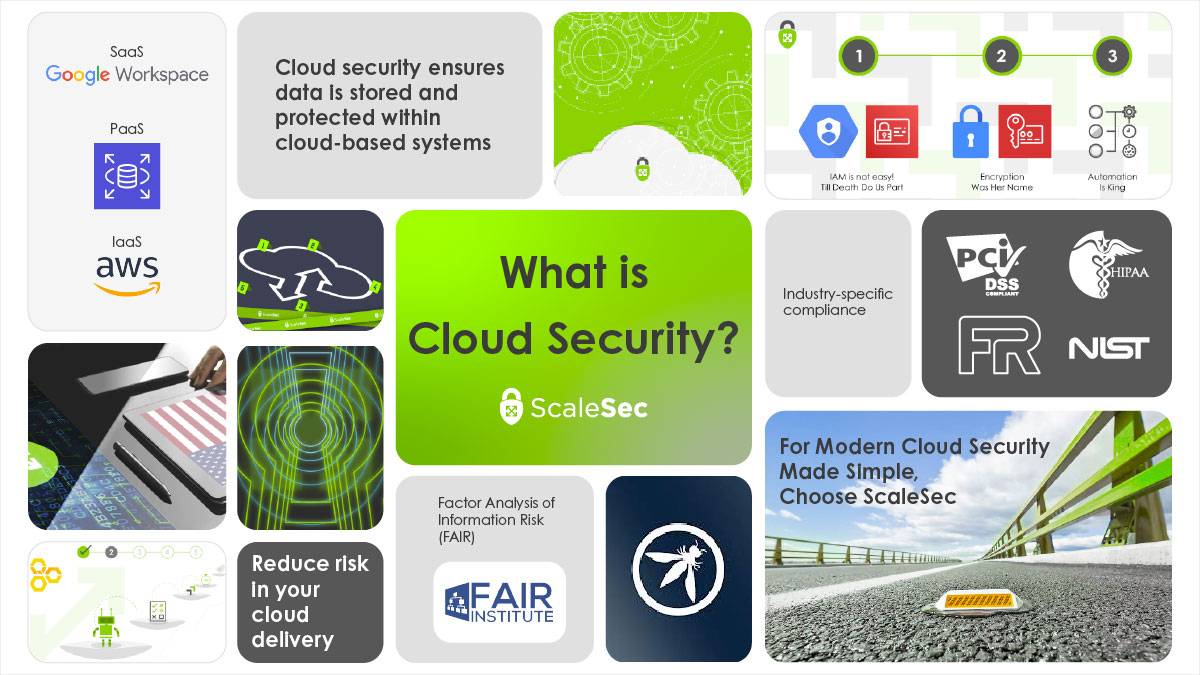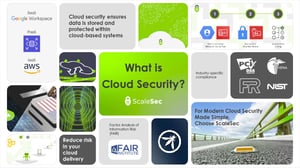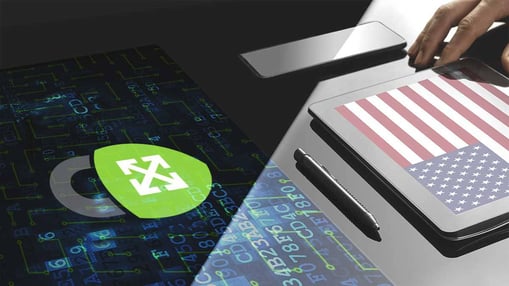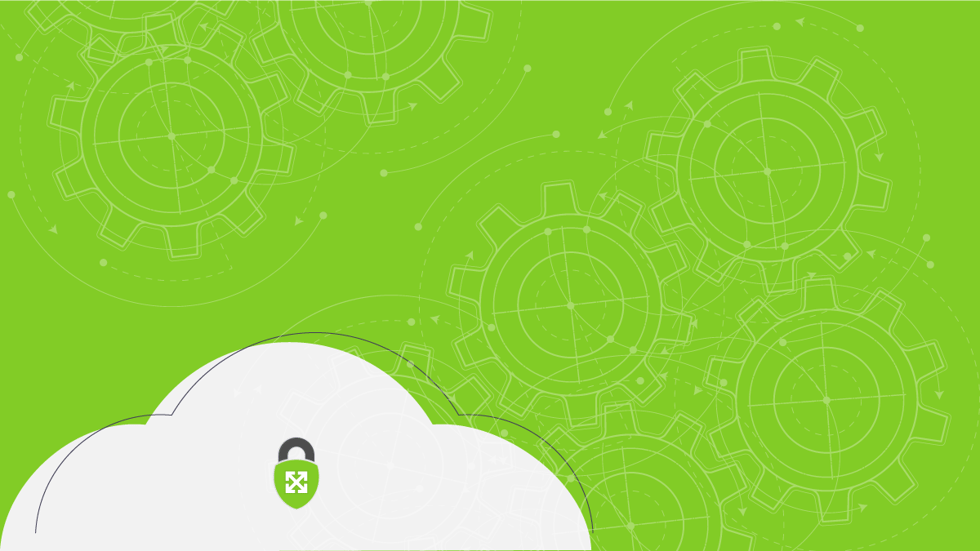
What Is Cloud Security?
The Beginner’s Guide to Cloud Security
The success of your cloud strategy depends heavily on your company’s commitment to cloud security. Learn what cloud security is, why it’s important, and how to get started below.
Table of Contents
- What Is Cloud Security?
- Why Is Cloud Security Important?
- Who Needs Cloud Security?
- Primary Cloud Security Services
- The 5 Cloud Environments
- Common Cloud Security Risks, Threats, and Challenges
- How to Get Started With Cloud Security
What Is Cloud Security?
Cloud security is a commitment to reducing risk in your cloud delivery. It’s a system of using modern and cloud-native tools, such as automation and infrastructure-as-code (IaC), to defend your environment in alignment with a governing set of policies and standards. It also ensures your critical business data is kept private and safe as you innovate to deliver on business goals using everything the Cloud has to offer.
You can use the Cloud to build software, store and process data, and leverage high-level services outside the boundaries of your local hardware. The most common cloud services include:
- Software-as-a-Service (SaaS) — A software delivery model where cloud-based applications are hosted by a third party and made available via a licensing and charge model. All development, support, and operations of SaaS services are managed by third-party providers. An example of SaaS is Google Workspace.
Google Workspace
- Platform-as-a-Service (PaaS) — A cloud service model where a third-party provider administers custom application framework that manages operating systems, storage, software updates, and other cloud infrastructure automatically. This provides a host that enables businesses to streamline their own app development. An example of PaaS is Amazon Relational Database Service (Amazon RDS).

Amazon Relational Database Service (Amazon RDS)
- Infrastructure-as-a-Service (IaaS) — A cloud service model where computing resources are provided by a cloud services vendor. The vendor provides all storage, network, and servers, but the buyer/business manages their data and applications on-premise. An example of IaaS is Amazon Web Services (AWS).
Amazon Web Services (AWS)
When any of these cloud services are used to access, store, transfer, or modify data, cloud security is incredibly important. Without it, data could be lost, stolen, or exposed to other serious threats that will harm your customers and your business.
Cloud Security vs. Cybersecurity
It’s common for people to confuse cloud security for cybersecurity, or vice versa. Cybersecurity has been a well-known term for years, as many have tried to keep their hardware and software free from cybercrime. However, as more companies embark on their cloud journey, cloud security is equally as important.
-
Cloud security ensures data is stored and protected within cloud-based systems. It is a category within the overarching realm of cybersecurity. It also ensures safe access to these systems and protects data while it’s in transit, or exchanged between systems like APIs.
-
Cybersecurity involves protecting networks, devices, and data from unauthorized access or criminal use. It ensures the confidentiality, integrity, and availability of information.
Thus, the main difference between cloud security and cybersecurity is that cybersecurity is universal to all systems — regardless of whether they’re cloud-based, on-premise, or some combination of the two. Cloud security is specific to cloud-based systems.
Why Is Cloud Security Important?
Businesses of all industries and sizes are migrating to the cloud. Throughout this process, it’s critical to understand that security in the cloud is much different than on-premise security, and that every cloud provider is different in how they approach it.
While third-party cloud providers may take on the management of your cloud-based infrastructure, they rarely take on the responsibility of security within it. The responsibility falls to you, and it’s important to prepare yourself to take it on or find someone who can help you. This is what’s called the “shared security model.” This model states that the cloud service provider is responsible for security OF the cloud, whereas you (user or company) are responsible for security WITHIN the cloud.
The cloud is inherently secure, but security threats have escalated in recent years as our digital landscape has grown and evolved. Scaling software, applications, and cloud environments can pose a number of challenges to your business and your data. If you are not continually improving cloud security posture, then your company’s data, privacy, and compliance could be in jeopardy.
Who Needs Cloud Security?
If your business currently operates in the cloud, or intends to in the future, cloud security must be a top priority.
Every business that’s currently operating on the cloud — no matter how big or small, or how many customers you have — should have a cloud security strategy to ensure they are protected. For any business wishing to migrate to the cloud, starting with security is critical to maintaining a safe and successful cloud environment in the long term.
Primary Cloud Security Services

Primary Cloud Security Services
What exactly does cloud security involve? Here’s a broad overview of some of the primary cloud security services that help keep businesses and their data free from harm — pulled from AWS’ security pillar list.
-
Foundations: a number of principles aimed to help you strengthen your workload security (identities, traceability, data protection, etc.). You can find all of AWS’ Foundations design principles here.
-
Infrastructure protection: tools and services aimed to ensure a stable cloud environment.
-
Data protection: tools and services aimed to ensure the security of data within the cloud environment(e.g. data encryption, remediation alerts).
-
Identity and access management (IAM): protocols for ensuring that all users attempting to access cloud-based services are authorized.
-
Detection: protocols for identifying unauthorized cloud access.
-
Incident response: protocols for what happens in the event of an unauthorized intrusion.
-
Industry-specific compliance: cloud security compliance requirements for PCI, HIPAA, FedRAMP, NIST, etc.
Bottom line? Cloud security services are intended to protect your data, protect your customers, and protect YOU. Each item listed above works toward that.
The 5 Cloud Environments
Cloud environments are deployment models that include one or more cloud services (Saas, IaaS, Paas). The included service(s) create a robust system for end-users. The type of cloud environment dictates who manages particular responsibilities (including security) — client, provider, or both?
1. Public Cloud
A public cloud environment may require a client to share a provider’s hardware with other clients, even though they are logically separate. Services are run by the cloud provider, and multiple clients are given access through the web.
2. Private Third-Party Cloud
A private third-party cloud environment allows the client exclusive use of their own cloud. While the environment might be managed by a third-party provider, it is for the client’s use only.
3. Private In-House Cloud
A private in-house cloud environment allows the client exclusive use of their own cloud, which is managed by the business itself. The client is responsible for configuring and maintaining the environment, most often with a team of data experts and developers.
4. Multi-Cloud
A multi-cloud environment combines two or more cloud services from different providers. They might be a blend of public and private cloud environments too.
5. Hybrid Cloud
A hybrid cloud environment combines a private (third-party or in-house) cloud environment with one or more public cloud environments.
Common Cloud Security Risks, Threats, and Challenges
Your company faces cloud security risks, threats, and challenges every day. While it’s impossible to eliminate them entirely, you can learn to manage and prepare for them so they don’t pose larger issues.
Your first step is knowing that the terms “risk,” threat,” and “challenge” do not mean the same thing. Understanding their subtle differences can help you prepare for and protect yourself against them.
Cloud Security Risks
Cloud security risks are the likelihood of a harmful event happening, along with the correlated impact of that event. Some good examples are Factor Analysis of Information Risk (FAIR) and Open Web Application Security Project® (OWASP).
Cloud specific risks include:
- Publicly accessible data
- Improper access controls
- Misconfigurations
- Inadequate network controls
Cloud Security Threats
Cloud security threats are anyone or anything that could negatively impact your cloud environment. If successful, they could expose your cloud to the above risks. Threats include:
- Advanced persistent threats (APTs)
- Insider threats
- Targeted cyberattacks
- Random cyberattacks
Cloud Security Challenges
Cloud security challenges are a business’s own barriers to implementing cloud security practices. Challenges could include:
- Lack of cloud security knowledge or skills
- Insufficient identity and access management
- Shadow IT
- Legal or regulatory compliance
How to Get Started With Cloud Security
If you’re operating on the cloud and have not implemented a security strategy yet, the time to act is now. If you’re interested in building or migrating to the cloud, exploring security options should also be at the top of your to-do list.
There are two main ways of getting started with cloud security. But first and foremost, we recommend doing exactly what you’re doing right now — research! Informing yourself of the various cloud security services, practices, and risks can help you choose the right path for your business.
From there, you can choose one of two options to help get you started on the right foot with cloud security:
- Hire your own in-house team of cloud security experts to spearhead the effort. This option could be incredibly valuable to your business, but could also take some time upfront to hire and train new team members. It may also be a more expensive option than others.
- Work with a team of experienced cloud security consultants, like our team at ScaleSec. Our consultants have years of experience providing low-friction cloud security solutions for businesses in large-scale enterprise environments. We’ll guide you through best practices on all things compliance and security, so you can scale operations and reduce risk, cost, and toil.
For Modern Cloud Security Made Simple, Choose ScaleSec
If you want to increase confidence in your cloud security controls, contact our team at ScaleSec. We’ll help you replace roadblocks with guardrails and identify opportunities that enable your team to scale faster, safer.


